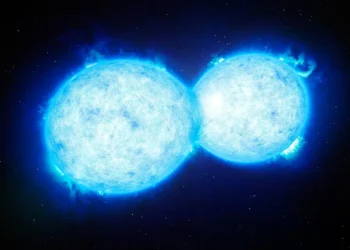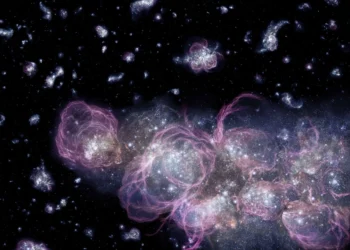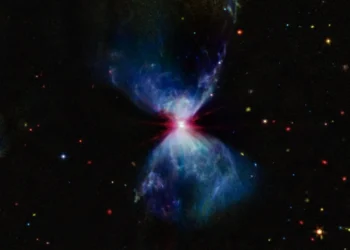Scientists have discovered a huge circular structure in space, with a diameter of 1.3 billion light-years. If we could see it with the naked eye, it would occupy an area 15 times larger than the Moon in the night sky.
It is called the “Great Ring”. It consists of separate and grouped galaxies, although they are difficult to identify due to their remoteness. According to the cosmological principle, such a gigantic structure should not exist. According to the latter, matter is evenly distributed in the universe, but the “big ring” violates the expected ratio.
“This is the seventh large structure discovered so far, which contradicts the idea that the cosmos is homogeneous on a large scale,” say experts who argue that if such objects are real, it may be necessary to rethink the evolution of the universe.

Image: NASA
The same scientists also discovered a “Giant Arch” extending over 3.3 billion light-years and also consisting of galaxies.
“According to our current understanding of the universe, neither of these two supermassive structures is easy to explain. Their size, different shapes and cosmological proximity should tell us something important, but what?” the researchers say.
Both of these objects appear close to each other, in the vicinity of the constellation Menahiri. It is possible that they are interconnected and even create a larger structure, but it is not known what phenomenon we are dealing with.
Perhaps this is a trace of the early Universe, where streams of high and low density matter “froze” in extragalactic space. Interestingly, the largest such structure observed so far is the “Great Wall”, which has a diameter of about 10 billion light-years. From the point of view of the Earth, it looks like an almost perfect ring, but in fact it should have the shape of a spring.
The authors presented the results of the study at the 243rd meeting of the American Astronomical Society.






Discussion about this post